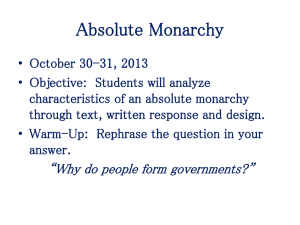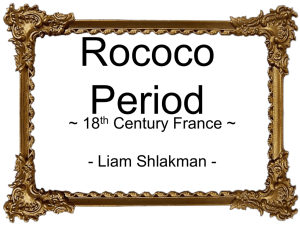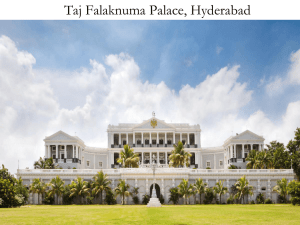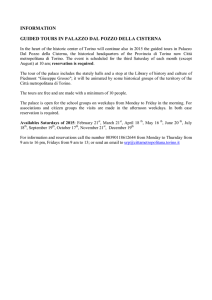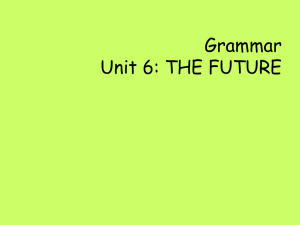secularrococo
advertisement
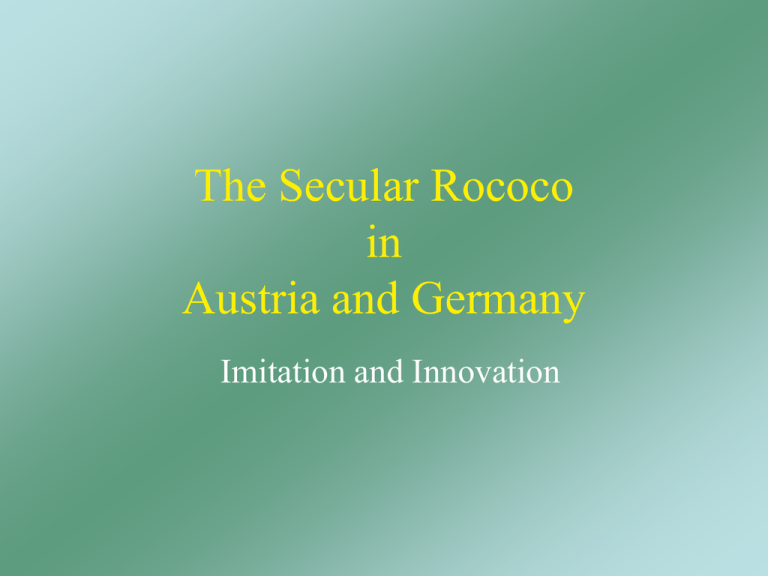
The Secular Rococo in Austria and Germany Imitation and Innovation Schönbrunn Palace in Vienna 1695/6ff by Johann Bernhard Fischer von Erlach Much construction took place in central and eastern Europe after the end of the Thirty Years’ War (1618-1648). Large numbers of palaces, churches, and other buildings needed to be built in order to replace those lost during this long and destructive war that ravaged countries from Sweden to Bohemia. The broad popularity of the architectural style that was identified with the French court and the Bourbon dynasty cannot be underestimated as a cultural phenomenon of the late 17th and the 18th centuries. The expression of the absolute power of the “Sun King” (Le roi soleil) was widely imitated throughout continental Europe by princes, dukes, and minor nobility, even by the Hapsburgs (the Holy Roman imperial family in Vienna). The impact of Italian artisans on the building projects of central Europe also contributed to the unique style that developed there. In 1690, a young Austrian architect with the formidable name of Johann Bernhard Fischer von Erlach (1656-1723) proposed a plan for the new palace of Emperor Leopold I and the Hapsburg family just outside Vienna. Schönbrunn Palace reflects the precedents set by Louis XIV in its suburban location, in its vast size, and in its effort to represent the power of the Holy Roman imperial family through the imposition of human will on the site. After comparing the original scheme with the available budget, Fischer von Erlach produced this more modest design. It was covered in stucco and painted; stone was reserved for selected details. Schönbrunn Palace with its park, including formal gardens in the manner of Versailles, is much smaller than its French model. The interior of Schönbrunn is more nearly approaches the quality of Versailles, although executed in less expensive materials: principally stucco, paint, and gold leaf. The color palette is typically rococo. The intimate scale of the rococo and its interest in the layering of architectural space with illusionistic space can be seen in these rooms at Schönbrunn. The Belvedere Palace of Prince Eugene of Savoy 1721-23 by Johan Lukas von Hildebrandt Another Austrian architect rose to prominence in the early 17th century: Johann Lukas von Hildebrandt (1668-1745). One of his most important commissions was the Belvedere Palace for Prince Eugene of Savoy (1721-23). Well connected with the French court through his mother, Olympia Mancini, Prince Eugene was educated as an officer. He was denied his commission in the French army when his mother fell out of favor. He was also distantly related to Leopold I of Austria, and therefore offered his services to the Austrian house. In 1683, at the age of 20, he was instrumental in driving the Turks back from the borders of Vienna and pushing them back into southeastern Europe. For his high accomplishments, the emperor built him the Belvedere palace on a hill outside of Vienna. Prince Eugene never married and had no heirs; so the Hapsburg family acquired the palace after his death. Maria Theresia installed several of her 18 children in the Belvedere since there was not enough room for them at Schönbrunn. Another important quality of the rococo emerges in the Belevedere Palace: playfulness and fantasy in concept as well in detail. The “Residenz” of the Prince Bishop of Wuerzburg (Bavaria) 1724-44 by Balthasar Neumann (and others) with Giovanni Tiepolo Coaches would drive into this enclosed porte cochere and drop their passengers off so that they could approach the stair case (German: “Treppenhaus”) and begin the ritual of arrival as prescribed by the etiquette of the Spanish court. A visitor’s station as compared with the Prince Bishop would determine how far down the stair the host would descend and how high up the stair the visitor would ascend in order to exchange greetings. The White Room forms the transition from the stair hall to the “Imperial Salon” (Kaisersaal). The Kaisersaal is decorated in a classic rococo palette of white walls, pale pinks, creams, and gilding, with a blanket of illusory space. The material of the room is predominantly stucco with faux finishes that represent marble. Stone is found at the wall bases. Mixtures of two- and threedimensional elements for illusion Betrothal of Beatrix of Burgundy to H.R.E. Frederick Barbarossa in 1156 The bridal journey of Beatrix of Burgundy in the sun chariot of Apollo


